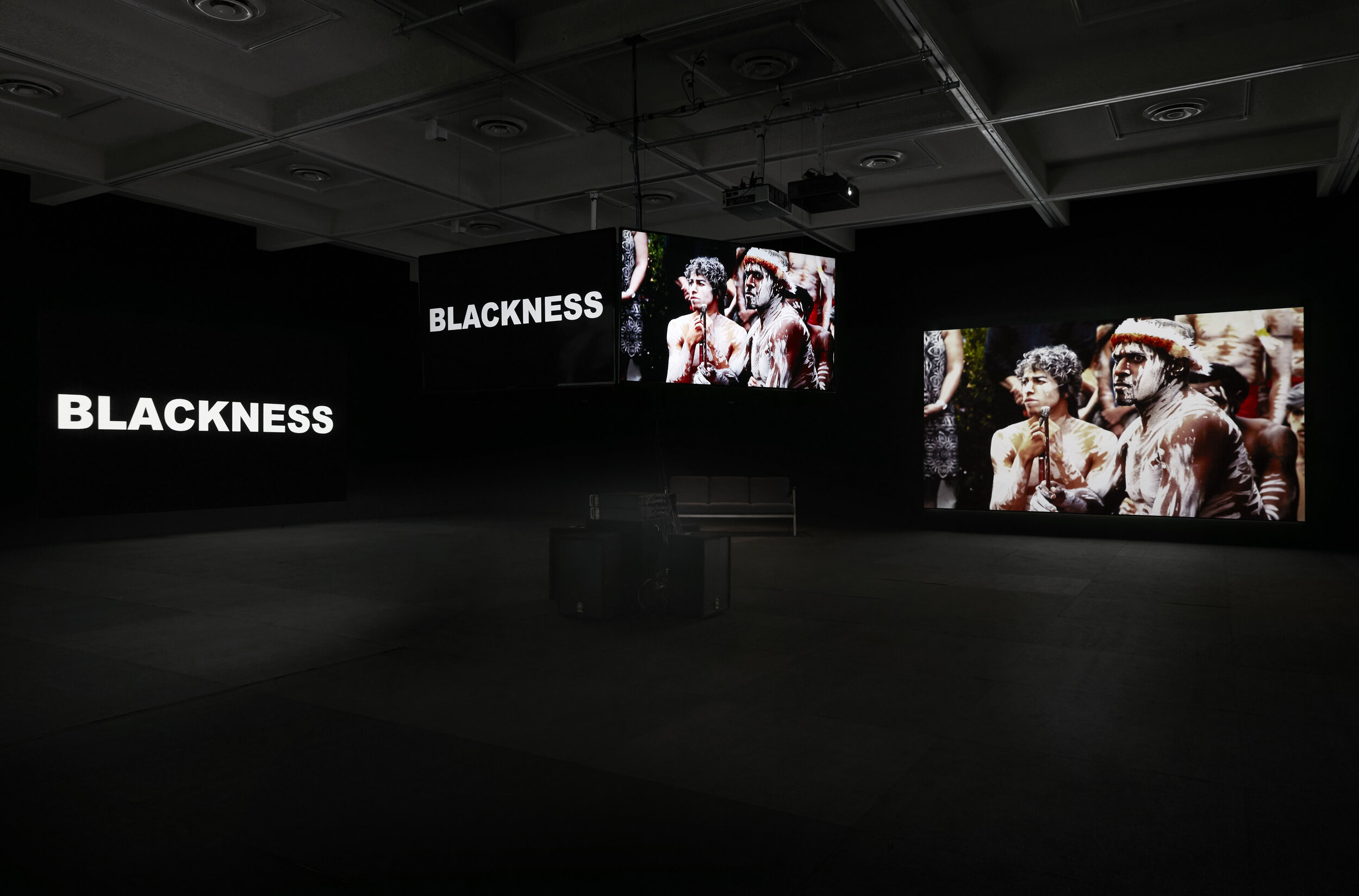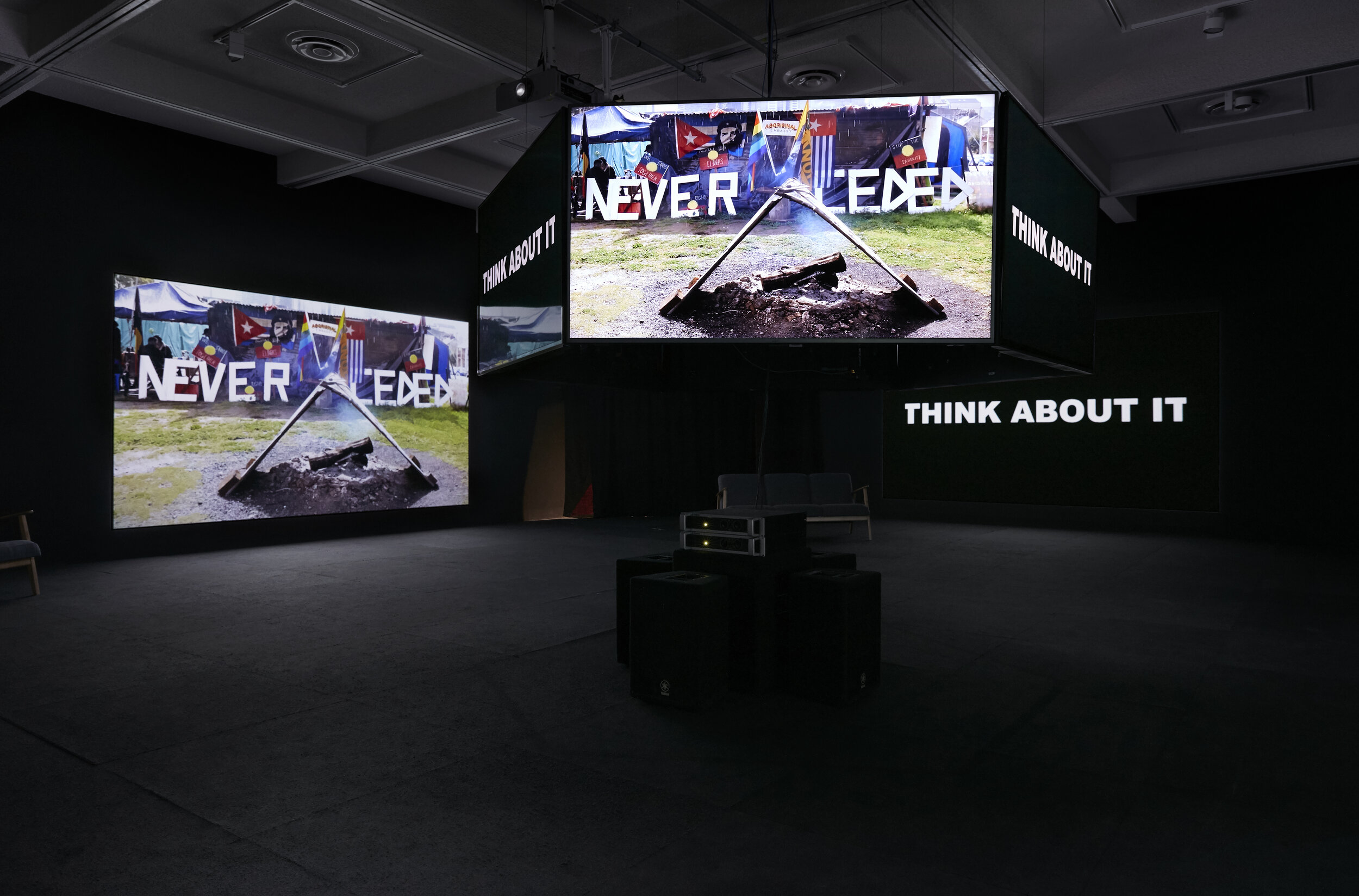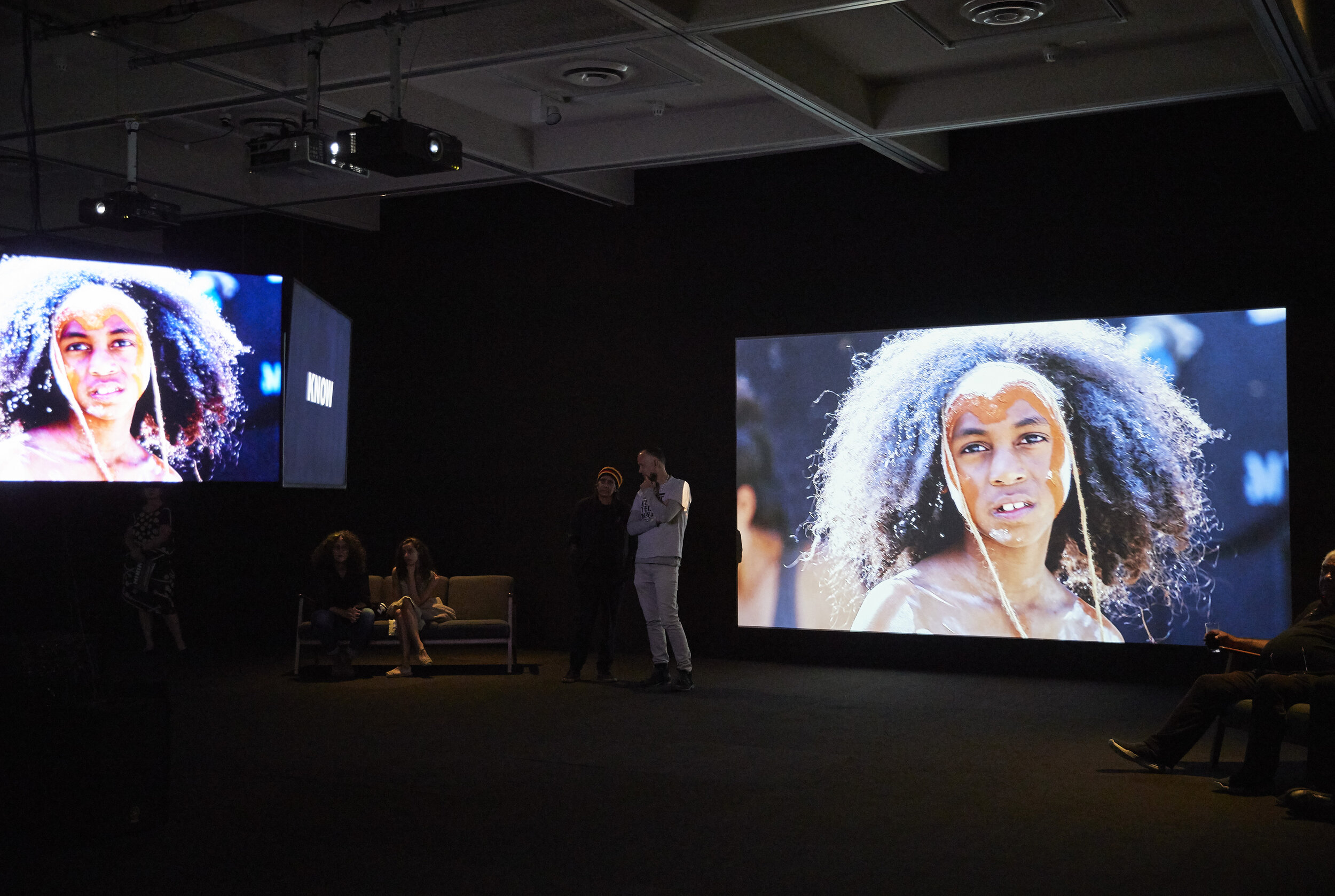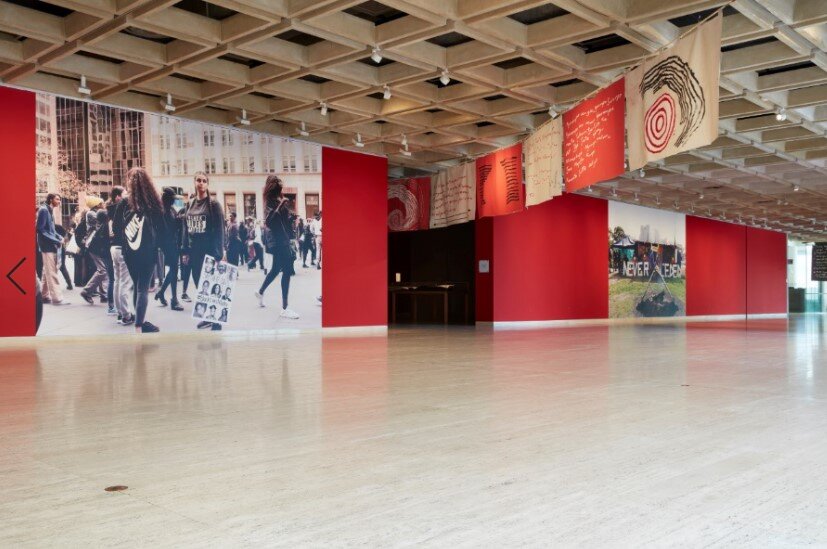‘The photos say they can’t breathe’: Barbara McGrady at Campbelltown
/A heavy yet upbeat heart pounds from the core of Campbelltown Arts Centre, host to Western Sydney’s iteration of ‘NIRIN: 22nd Biennale of Sydney’, where Ngiyaningy Maran Yaliwaunga Ngaara-li (Our Ancestors Are Always Watching) (2020) is fated to dislocate the dominant white gaze. In this work (created with John Janson-Moore), artist and proud Gomeroi/Murri/Yinah woman Barbara McGrady exposes her 30-year-strong photography practice in a jolting, symphonic, archival assemblage of text, photography and music, full of eye-opening contradictions and realities.
McGrady is ready to perform and to tell us how it is – how Indigenous Australia views the world – through her black lens. An immersive 360-degree kaleidoscopic multi-screen installation fuses imagery and text that pulsate in unison with Tasman Keith’s captivating and Indigenous reality-check hip-hop track, ‘My Pelopolees’ (2018). While McGrady’s powerful images do most of the talking, her byte-size texts, lifted from her regular social media posts and projected one word at a time to the beat of the music, sometimes rapid-fire, convey a feeling of being present at a protest rally, surrounded by placards, calling the audience to action. Each word. Each image. Each imbued with the reality of the human condition …
McGrady’s images conflate past and present events – both adverse and triumphant – deserving of commiseration or celebration. She shows Indigenous Australians at sporting events as well as Mardi Gras, traditional and contemporary performing arts, with family members and at protest events, drawing attention to issues of land rights, racism, connection to Country, Aboriginal pride, traditional customs and oppression …
Ngiyaningy can be likened to a shattered mirror or cubist painting, where shards of contemporary Indigenous Australian history, disjointed yet connected, project a singular subject from multiple angles. The design of the space reinforces this effect, as snippets of the same image slice the viewer’s peripheral vision, complementing an inescapable immersion of imagery, text and sound. McGrady’s black box within a predominantly white cube institution, highlights the intention for Ngiyaningy to disrupt audiences’ perspectives and preconceived belief systems …
Halfway through the work, Ngiyaningy re-routes into a less activist and more intimate personal journey. Witnessing a heartfelt conversation with her passed mother, to the tune of Electric Fields’s soulful song ‘Pukulpa’ (2016), the audience is reminded to remain strong and proud … As well as speaking intimately with her mother, McGrady communicates with former AFL star Adam Goodes, one powerful word at a time. The artist comforts Goodes with her declaration that she was there, supporting him during the darkest days of the controversial booing campaign, directed at Goodes for speaking out against racism …
Ngiyaningy needs to be experienced multiple times to appreciate its intricate web of stories, events, messages and emotions. McGrady’s images were not photographed with the intention of displaying them in the context of a contemporary art exhibition. Each image was destined for a newspaper, magazine, website, social media post or personal photo album. However, the power of their collective re-presentation in Ngiyaningy provides a forceful and creative narrative …
On entering Ngiyaningy I was stopped in my tracks. McGrady captured the first #BlackLivesMatter campaign in 2015 and declares that ‘THE PHOTOS SAY THEY CAN’T BREATHE’. Five years on and the photographs are alarmingly current. Selected as one of four images to be presented on a massive scale at the Art Gallery of New South Wales during ‘NIRIN’ (until 27 September), and incorporated into Ngiyaningy, the contemporaneity of McGrady’s Black Lives Matter, Martin Place (2015) is both uncanny and intolerable, given the recent death of George Floyd. As I reflect on the work, the unsettling realisation occurs to me that the loop of many unresolved issues, including Aboriginal deaths in custody, is on repeat. Again and again, they keep on happening: ‘OH YES JUST ANOTHER DAY IN THE COLONY.’
Nicole Fiedler Wallace, Sydney
This is an edited excerpt of an essay written in partial fulfilment of a Master of Curating and Cultural Leadership at the University of New South Wales, Sydney, responding to Barbara McGrady’s Ngiyaningy Maran Yaliwaunga Ngaara-li (Our Ancestors Are Always Watching) (2020), at Campbelltown Arts Centre for ‘NIRIN: 22nd Biennale of Sydney’ until 11 October 2020.






















